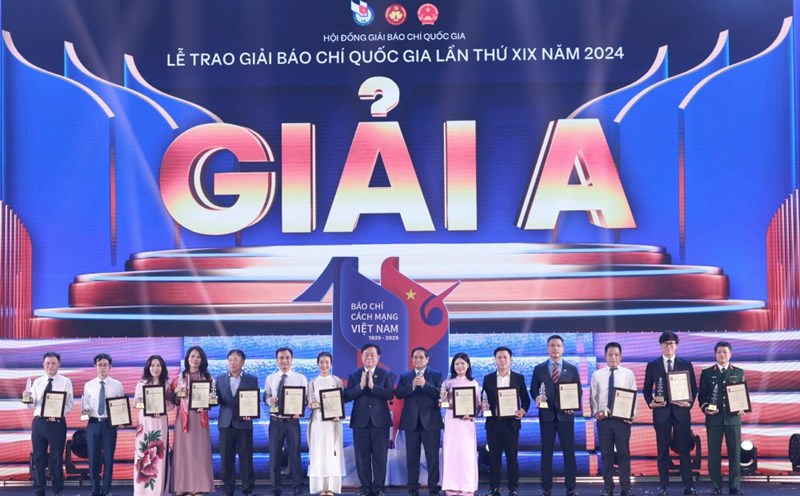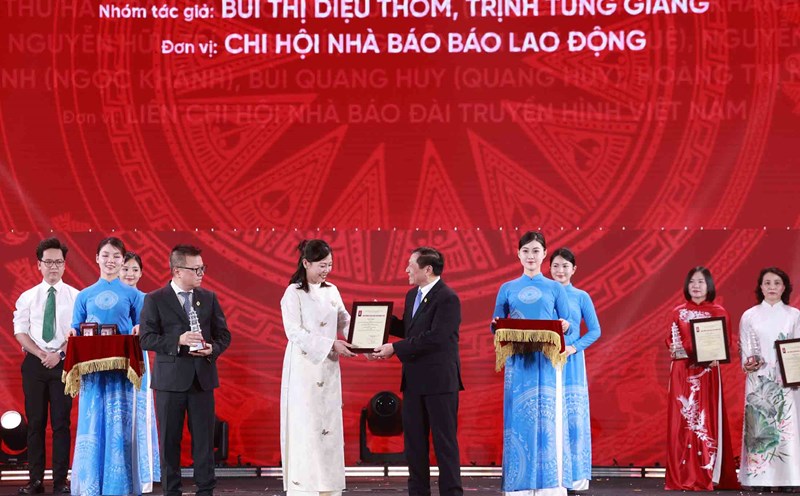"3 in 1:" reporter: Writ, take photos, film
I work in the labor - trade union sector, so I have recorded many stories of real people and real workers from workers and laborers. field trips to factories, industrial parks, and construction sites are now not simply a matter of bringing a few statements and a few photos, but a "set of products" for multimedia information.
I often carry a camera, phone and microphone to be ready to film videos, take photos, record record, write articles, and show the scene on the spot. Thanks to internal training courses on filming, photography, and clip making skills using phone software or computer software, work has become much more flexible and efficient.
Since then, footage of workers in factories or boarding houses has become more realistic than ever. Readers can most realistically imagine the life of workers: What they hope for, what they think about, what life lacks, what is full, ... what.
We not only film pure news videos but also create motion graphics videos, canva videos - attractive, intuitive formats, attracting high views on digital platforms. The policies seem to be dry and difficult to reach readers, but there are many videos that have reached hundreds of thousands of views overnight on Lao Dong's website. Most of it is thanks to vivid images, concise citations and clear messages. This also reflects the need to change the habits of receiving information of today's readers: fast, compact, intuitive.
AI - a powerful assistant in the work process
One of the tools that young reporters like me often use is AI software that separates content from audio files. After each long interview, instead of having to listen to each doan to record, I just need to download the file to the software, a few minutes later, I have a full copy. Although it is necessary to re-check the accuracy, this has saved a lot of time, especially during hot news or when it is necessary to handle many contents at the same time.
Or like internal AI software, I can review spelling errors in the most accurate way, this software also suggests optimizing SEO and tag reporters so that the article can reach the maximum reach of readers.
AI not only supports recording extractions, but can also suggest titles, summarize the content of articles, and even analyze keyword trends, helping me better understand the interests of readers to orient appropriate content.
In many articles reflecting workers' concerns about wages, bonuses, and benefits, I often analyze data from online surveys, thereby providing leadership and policy recommendations. This is also a digital transformation method that is helping to elevate the level of articles from description to analysis, from news to documents.
Changes to suit readers
Today's readers do not only read newspapers on paper or websites, but mainly update information via phone and social networks. This requires journalists to change their approach: Attractive titles, eye-catching photos, short videos but with enough information, the story must be close and spreading.
I noticed that when the content of the article is invested in both accompanying images and videos, the number of reads and shares increases significantly. Emotional stories about workers' lives and the efforts of the Trade Union organization in caring for workers' lives, when presented in short videos with emotional quotes, often touch the hearts of viewers more than simple text.
Challenges and motivation for innovation
Of course, not everyone can easily keep up with technology. Many older reporters in Lao Dong Newspaper were initially quite confused with video creation software or AI tools. But through internal courses, support from young colleagues and especially the clear efficiency that technology brings, working skills are gradually changing.
Digital transformation is not only the use of new tools, but also the transformation of thinking in journalism. From simply reporting, reporters now have to know how to analyze data, tell stories through images, and build communication messages. The difficulty is how to maintain both content quality and be quick-witted in form to attract readers.
ever before have journalists had as many support tools as they do now, but the responsibility of conveying information correctly, quickly, and attractively has never been as great as it is today. For me, digital transformation does not lose the nature of the journalism profession, but is helping the journalism profession develop more deeply and professionally.
From the steps down to the industrial park site, to each frame recording the eyes of workers, from the title line to the video description line, I clearly feel the movement of the press profession in the new era. And on that journey, the reporter is not only the reporter, but also the narrator with all the tools that technology brings.












